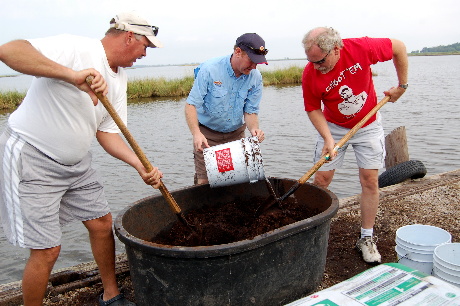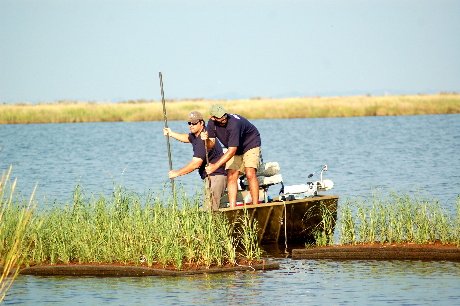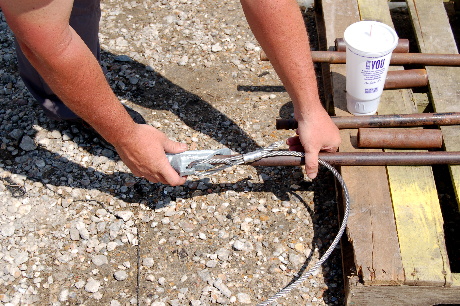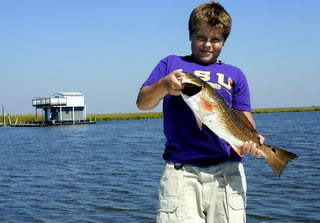Floating Islands? Really?
Yes, really, but these are not your typical islands. These are man made and hopefully not the kind humans will ever be deserted on. They serve a much greater purpose, and the concept just blew me away.
 But when I saw how they were used, I was REALLY blown away.
But when I saw how they were used, I was REALLY blown away.
As part of National Estuaries Day, this “floating island” restoration project was undertaken, involving NGO’s, corporations, government agencies, schools, and volunteers down at a place called “Island Road”.
Floating Islands March Creation on Island Road
Early Saturday morning, I hopped in the truck and headed east on back bayou roads to Bayou Point Aux Chenes (point of the oaks) and on down to my final destination of Isle de Jean Charles. It’s only about 25 miles east of my home as the eagle flies, but driving took me an hour!
This was the third and final day of a shoreline restoration using “Biohaven floating islands“. Martin Ecosystems of Baton Rouge, licensed in Louisiana to make this product, oversaw the volunteer work and installed the islands we created . They are a very impressive family-owned and family-run business.
 The islands are formed of mats made from 100% PET recycled plastic.
The islands are formed of mats made from 100% PET recycled plastic.
 As seen above, the mats have holes already cut in them to receive the plants and peat moss.
As seen above, the mats have holes already cut in them to receive the plants and peat moss.
Planting the Floating Island Mats
This particular morning, I had the privilege of working alongside students from South Lafourche High School, Terrebonne Parish 4-H Leadership, Vandebilt High, as well as adults from the Terrebonne Parish Coastal Zone Management Board and other volunteers.
 First, buckets of bayou water were mixed in with the peat moss, giving it more weight. Each mat would receive two buckets of peat moss . . .
First, buckets of bayou water were mixed in with the peat moss, giving it more weight. Each mat would receive two buckets of peat moss . . .
 as you can see in the above photo, the work resembled an assembly line.
as you can see in the above photo, the work resembled an assembly line.
 This group dumped both their buckets of peat moss onto the mat right away. The students approached the mat from all sides, making the work go very quickly.
This group dumped both their buckets of peat moss onto the mat right away. The students approached the mat from all sides, making the work go very quickly.
 The first two rows were planted with seashore paspalum, a shorter salt-tolerant plant.
The first two rows were planted with seashore paspalum, a shorter salt-tolerant plant.
 The remaining perimeter and middle were planted with taller plants called smooth cordgrass. Each plant was poked down into a hole, then packed tightly with the peat moss, and lastly the rest of the peat moss was spread all over the mat.
The remaining perimeter and middle were planted with taller plants called smooth cordgrass. Each plant was poked down into a hole, then packed tightly with the peat moss, and lastly the rest of the peat moss was spread all over the mat. This was a snap for these kids! The first mat was finished and on its way to the transport trailer in under ten minutes.
This was a snap for these kids! The first mat was finished and on its way to the transport trailer in under ten minutes.
 They worked so quickly, that they started lining the mats up on the ground because the two transport trailers could not keep up with them!
They worked so quickly, that they started lining the mats up on the ground because the two transport trailers could not keep up with them!
 As is typical for south Louisiana, volunteers were cooking under another tent. This was the beginnings of pork, chicken, sausage jambalaya! We could smell it cooking while we worked! What an incentive!
As is typical for south Louisiana, volunteers were cooking under another tent. This was the beginnings of pork, chicken, sausage jambalaya! We could smell it cooking while we worked! What an incentive!
Installing the Floating Island Mats
 Next the island mats were unloaded at a designated spot, and several men lowered each mat into the water where two of the Martin sons were waiting to string them together. The completed mats weighed about 80 pounds.
Next the island mats were unloaded at a designated spot, and several men lowered each mat into the water where two of the Martin sons were waiting to string them together. The completed mats weighed about 80 pounds.
 For those of you who love the finer engineering details, here they are. Each mat has two PVC pipes running through it longways, large enough to accept 5/16 stainless steel cable.
For those of you who love the finer engineering details, here they are. Each mat has two PVC pipes running through it longways, large enough to accept 5/16 stainless steel cable.
 Some of the mats are equipped with an “end” piece of larger PVC that is plugged and crimped with stainless sleeves, holding the cable in place. Then the cable is pushed through by hand and inserted through the smaller PVC in each successive mat.
Some of the mats are equipped with an “end” piece of larger PVC that is plugged and crimped with stainless sleeves, holding the cable in place. Then the cable is pushed through by hand and inserted through the smaller PVC in each successive mat.
Once the desired number of mats were strung together, the “ends” were made up with a loop in the cable and another set of sleeves and then pulled taught with a batter-powered winch. Chad Martin can be seen in the distance pushing the mats into line with his boat so all the slack can be pulled out. In the foreground were Edwin, Jason Martin, and a fellow whose name I have forgotten.
 The islands were then towed into place with the boat and anchored down as seen below.
The islands were then towed into place with the boat and anchored down as seen below.
 These anchors are attached to the ends of the island chain and on the sides every 30 feet using more of the stainless steel cable. The pipe you see above is then pushed down to the desired depth using a hydraulic powered pile driver. In this application, clay was discovered about ten feet down, so the anchors were secured another six feet down into the clay. The pipe is removed, the anchor does its job, and voila! You have a created a new floating island or shoreline.
These anchors are attached to the ends of the island chain and on the sides every 30 feet using more of the stainless steel cable. The pipe you see above is then pushed down to the desired depth using a hydraulic powered pile driver. In this application, clay was discovered about ten feet down, so the anchors were secured another six feet down into the clay. The pipe is removed, the anchor does its job, and voila! You have a created a new floating island or shoreline.

In the above photo, you can see a group of the islands connected side-by-side. The islands can be connected in strands of desired length, side-by-side, or terraced. The Martins were way too busy doing their job for me to jump in the boat and get photos from the water, but I hope these give you some idea of what the island looks like on the water.
Time for Lunch
Let me add that these kids started around 9:30 and by 11:00, it was time to break and eat some delicious jambalaya and fried fish. Another reason they had to stop was because they had planted all the smooth cordgrass that was available, and someone had to go get more plants. After lunch, these kids planted another couple dozen or so mats in less than 30 minutes. It was pretty amazing!
Now, let me explain a little more how these islands work as a restoration method. They are placed in shallow water in front of an eroding shoreline (although there are also deep water applications for this product). The plants’ root systems extend through the holes, downward into the sediment, further anchoring the island in place.
While the plants continue to grow, water movement deposits sediments on and behind the islands over time. After about a year, the islands and the shoreline have fused as one so seamlessly that it is impossible to tell the island from the natural shoreline, unless you dig down with your hand and touch the plastic mat.
If you would like to see this method in established applications, then South Lafourche Parish Levee District floating island applications can be seen here. Note that one of the photos shows the island all grown over. Bayou Sauvage floating island photos can be seen here.
In my opinion, this is a great restoration method for smaller applications; however, lots of these island strings could be placed across a long shoreline, thus forming a bigger restoration project! This will offer greater opportunity for landowners to quickly restore lost shoreline.
My brain could really go to town with ideas for these floating islands; for example, how about paying for a block of these and then having the island named after you? That would just be the coolest thing ever!
Now, BW just has to figure out how to get some of these islands put to use on the eroding shorelines down her bayou! So, stay tuned to see how that goes!
Floating on an island of possibility,
BW






BW, this is absolutely fascinating. Have these floating islands been used elsewhere? Apparently so, since you have the details about how the grass anchors itself into the sediment. Are there places where you can see installations that have “grounded themselves”?
One of my first tasks is to be sure that the Galveston Bay Foundation knows about this. Surely they must. On the other hand, every time I’ve read about a volunteer day for planting grasses, it’s been a “get in the water and do it by hand” deal. There surely are areas around here that could make use of this technique.
Wonderful post. And kudos to the company and the creative souls who designed this. When you think about it, it’s just a variation of what gardeners have been doing for decades with their little pots – starting baby plants with some help and support before they go out into the garden.
This is exciting. 😉
Linda, I have gone back and included links within the story to the originator of this product “Biohaven” and to some of their photos of prior projects that are well established. You will note in some of the pics, they they are doing them differently than we did. I think they have sort of
tweaked the process over time and have arrived at a method that works really well using volunteers “on the ground” rather than in the water. Some of my past posts about marsh grass planting involve doing exactly what you mention . . . trudging through the muck to put the plants down. This is just so much nicer and has a great success rate of the plants surviving, too. So, now you have the website to share with the powers that be over your way! Yes, it IS exciting!
Thank ye for sharing this well documented story – a very “green” use o’ recycled materials and a vital restoration project. There is an article (with a couple more photos) about yer day at America’s Wetland Foundation http://bit.ly/qQWWRC and another longer one on Houma Today http://bit.ly/qfLMBB
Similar projects have been used up near New Orleans Lower 9th Ward (Holy Cross neighborhood) in Bayou Bienvenue to repair flood damage – some a result o’ the failed MR-GO channel.
Projects like this are so important because they are DOING something constructive – instead o’ just talking about it. A quote often attributed to Bruce Lee (but actually from famous German philosopher, Goethe) applies in this – and any similar – situation:
“Knowing is not enough, we must apply. Willing is not enough, we must do!”
Keep sharing…we’ll keep spreading the word – and doing whatever we can to help!
“I am only one. But still, I am one. I cannot do everything, but still I can do something. And because I cannot do everything, I will not refuse to do the something that I can do.” (Edward Everett Hale)
“Start by doing what’s necessary; then do what’s possible; and suddenly you are doing the impossible.” (St. Francis of Assisi)
One more thing…anyone who reads this – especially the part about the 25 mile distance that took an hour to drive – should look closely at a satellite view on Google Maps o’ the area. Ye’ll see that to go 25 mi. across many parts o’ South Louisiana requires going another +20mi. north and out o’ yer way!
Look CLOSELY at the map – ye may be confused by the many “Lakes” that are in open water…that’s the epitome o’ coastal erosion; much of it created by humans tearing redundant canals into it!
Points well made and taken! See map I added to the post!!!
I was waiting for this post. I knew you’d have one after seeing a photo and reading about this in the paper last week. I don’t recall the exact location where those were placed other than it being in your area.
Do you know if more projects are planned in different areas and how many mats will be made for each?
I forgot…click on the “Bayou Sauvage floating island photos” and you’ll see where you CAN “own an Island”. There are different shapes AND you can also have one custom made too.
Steffi – I read that AFTER I wrote the story . . . while finding the Biohaven link for y’all. They are as smart as I am and vice versa, lol!
The main supporters of this project were the Bayou Chapter of the CCA, the local Office of Coastal Zone Management, the America’s Wetland campaign, and on and on! I don’t know of any others on the books right now, but I have it on good authority that I will be helping to pick a spot in my area to do this next year!
So…How much is one of these little gems? Maybe some of your “followers” would like to make a contribution towards the purchase of one or more.
One thing I failed to do was ask the cost per linear foot, which is usually how shoreline protection is measured. I know they said months ago at a meeting, but I’ve forgotten. Maybe I have it in my notes, but I can find out some time today because I want to know, too.
I read the articles in the links you posted and it was $80 per foot in one of them. This was a very interesting piece. Someone had a great idea when they came up with these floating islands.
Sweet pretty neat etc. And food pix. As I get worse and worse in the diabetic dept and the back dept that is about all I can do is look at food.
I suppose the final life of these floaters is to become anchored somehow?
Well hey they traveled up here to Lincoln Park Zoo, sweet.
Doing some serious drugs and therapy hoping to get better fast.
Great recap! I was there Friday and saw it first hand. You explained it very well. To my understanding this project was actually created by Coastal Conservation Association volunteers from our local Bayou CCA Chapter. CCA along with the Parish and Shell have been working on this project for over 2 years. I was involved with this project from its inception. It was extremely beneficial that Americas Wetlands, Entergy, and numerous other great sponsors came on board, but that didnt happen till within the last 6 months. We are really hoping this trend catches on and it has a beneficial impact on our marsh and marine life. It will act as a habitate for marine life, along with rebuilding marsh.
Matin Ecosystems really did a great job in coordinating this whole project. We hope to do more with them in the near future.
Hey Ryan, thank you for so much for correcting my error! I should have done a little more homework on who started this thing. It’s amazing how when something is successful everybody wants to take credit, isn’t it!!! I am co-founder of a grassroots clean up that we call the Trash Bash down here on Bayou Dularge, and the local CCA chapter helped out one year, headed up by Capt. Droopy. Did you take part that year? If so, we would have met then. Thanks for the taking the time to leave us a comment, and I hope you come back soon! BW
That looks like a really cool project and I really like the idea of adopting an island type thing. I wish there was a way Jason could take a group of his kids out on something like that but I doubt the school would be up for a 12 hour one way field trip, lol.
Unrelated note, I sent you a text yesterday morning, did you get it? My phone decided to jumble up my contacts so I hope it went to you.
Yes, I did get it and I am going to msg. you on FB late tonight if I can. LilSis is down and we are busy, busy. Gotta jet again now.
Wow, totally awesome concept. Great to see all the young people involved in the project.
Very interesting! I didn’t realize this was how this was done. Thanks for an informative story.